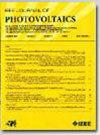与陆地光伏相比,公众接受浮动光伏的驱动因素和障碍
IF 2.6
3区 工程技术
Q3 ENERGY & FUELS
引用次数: 0
摘要
在浮动光伏发电(FPV)中,组件安装在水体上,以缓解光伏发电(PV)日益增长的部署所带来的土地竞争。然而,在流域上安装人工结构可能会影响景观,甚至引起那些支持可再生能源的人的担忧。这项工作专门调查了可再生能源支持者中公众对FPV的接受程度,以确定其主要驱动因素和障碍。这项调查是通过一项公众调查进行的,共有300多名受访者支持可再生能源。调查结果显示,虽然公众对FPV的接受程度仍然是积极的,但它比一般可再生能源系统的接受程度要低。这种差异主要是由于人们对这项新技术对景观和动物的影响的担忧。特别是,FPV的接受程度与其对景观美的感知变化之间存在反比关系。值得注意的是,对FPV持负面看法的受访者也最担心传统PV对景观的影响。调查还提出了提高FPV社会接受度的初步对策。对这些潜在措施的有效性进行了评估,为可再生能源部门的利益相关者和决策者提供了有价值的见解。本文章由计算机程序翻译,如有差异,请以英文原文为准。
Drivers and Barriers to the Public Acceptance of Floating Photovoltaics Compared to Land-Based Photovoltaics
In floating photovoltaics (FPV), modules are installed on bodies of water to alleviate the land competition arising from the growing deployment of photovoltaics (PV). However, the installation of artificial structures on water basins can affect the landscape and raise concerns even among those in favor of renewables. This work specifically investigates the public acceptance of FPV among renewable energy supporters to identify its main drivers and barriers. The investigation was conducted through a public survey, which counted more than 300 respondents favorable to renewable energies. The findings reveal that, while public acceptance of FPV remains positive, it is lower than that experienced by renewable energy systems in general. This disparity is mainly due to concerns surrounding the landscape and fauna impacts of this novel technology. In particular, an inverse relationship between FPV acceptance and its perceived alteration of the landscape beauty is found. Notably, respondents expressing a negative opinion on FPV are also those most concerned by the landscape impact of traditional PV. The investigation also proposes some preliminary solutions for enhancing FPV's social acceptance. The effectiveness of these potential measures is evaluated, providing valuable insights for stakeholders and policymakers in the renewable energy sector.
求助全文
通过发布文献求助,成功后即可免费获取论文全文。
去求助
来源期刊

IEEE Journal of Photovoltaics
ENERGY & FUELS-MATERIALS SCIENCE, MULTIDISCIPLINARY
CiteScore
7.00
自引率
10.00%
发文量
206
期刊介绍:
The IEEE Journal of Photovoltaics is a peer-reviewed, archival publication reporting original and significant research results that advance the field of photovoltaics (PV). The PV field is diverse in its science base ranging from semiconductor and PV device physics to optics and the materials sciences. The journal publishes articles that connect this science base to PV science and technology. The intent is to publish original research results that are of primary interest to the photovoltaic specialist. The scope of the IEEE J. Photovoltaics incorporates: fundamentals and new concepts of PV conversion, including those based on nanostructured materials, low-dimensional physics, multiple charge generation, up/down converters, thermophotovoltaics, hot-carrier effects, plasmonics, metamorphic materials, luminescent concentrators, and rectennas; Si-based PV, including new cell designs, crystalline and non-crystalline Si, passivation, characterization and Si crystal growth; polycrystalline, amorphous and crystalline thin-film solar cell materials, including PV structures and solar cells based on II-VI, chalcopyrite, Si and other thin film absorbers; III-V PV materials, heterostructures, multijunction devices and concentrator PV; optics for light trapping, reflection control and concentration; organic PV including polymer, hybrid and dye sensitized solar cells; space PV including cell materials and PV devices, defects and reliability, environmental effects and protective materials; PV modeling and characterization methods; and other aspects of PV, including modules, power conditioning, inverters, balance-of-systems components, monitoring, analyses and simulations, and supporting PV module standards and measurements. Tutorial and review papers on these subjects are also published and occasionally special issues are published to treat particular areas in more depth and breadth.
 求助内容:
求助内容: 应助结果提醒方式:
应助结果提醒方式:


